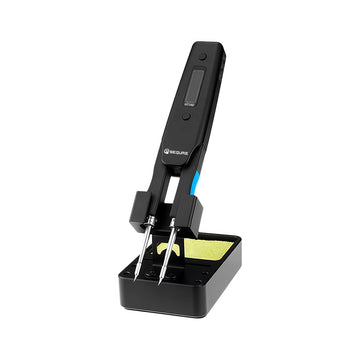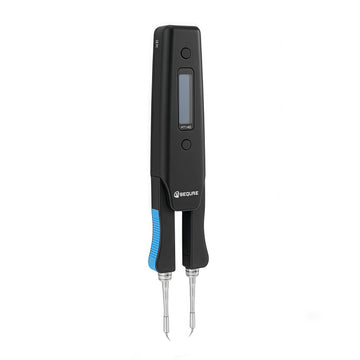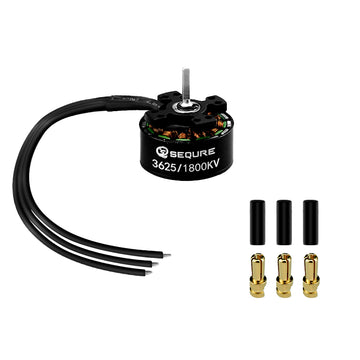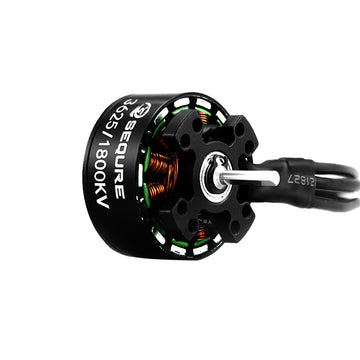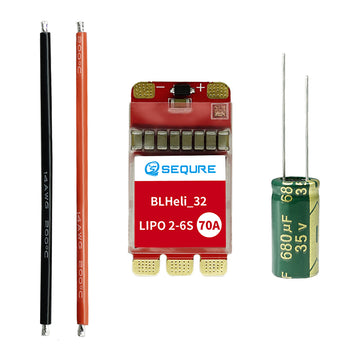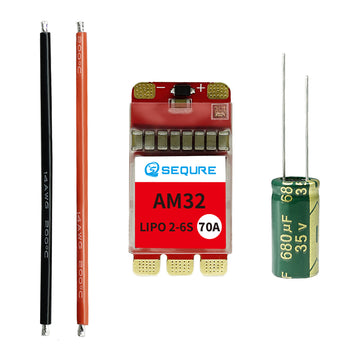What Is Your Soldering Temperature With Soldering Iron?
Soldering temperature of electric iron
Regarding the operating temperature of the soldering iron, how much do you think is appropriate?
When the electric soldering iron is soldering different things, the temperature is different. For copper and soldering iron, the temperature is different, depending on the actual situation. Generally, it just needs to be higher than the melting point of the solder. Too high temperature can easily lead to oxidation of the soldering iron tip. The welding time is generally 2s/point is the best, preferably not more than 3s/point.
What is the general temperature of an electric soldering iron?
If it is an electric soldering iron with tin, its maximum temperature is about 300 degrees. Because the melting point of tin is 231.9 degrees, it is impossible to weld aluminum. The melting point of aluminum is 660.2 degrees. Aluminum welding should be gas welding. What is the normal temperature of the electric soldering iron? When soldering different things, the temperature of the electric soldering iron is different. For copper and soldering iron, the temperature is different, depending on the actual situation. Generally, it is between 350 degrees and 400 degrees, as long as it is higher than the melting point of the solder. The maximum temperature is generally 480 degrees Celsius, but it is generally set to about 320-400 degrees Celsius. If it is higher, the soldering iron tip is easy to oxidize.
What is the appropriate temperature of the soldering iron?
This is determined by the actual application needs of the electric soldering iron. Generally speaking, the temperature at which the electric soldering iron can solder a tin point in 4 seconds is a more suitable temperature. If the soldering iron has purple hair, the temperature is too high. Specifically, when the electronic material needs to be inserted directly, the temperature of the soldering iron tip should be set between 330-370 degrees. For surface mount materials, the temperature should be between 300-320 degrees. The maintenance of the buzzer requires 270- At a temperature of 290 degrees, the welding temperature of the large component legs cannot exceed 380 degrees. In addition, for special materials, special temperature settings are required.
The following summarizes the welding temperature:
1 The temperature of the soldering iron for soldering patches, code switches and other components is 343±10℃;
2 The temperature of the soldering iron for welding color ring resistors, ceramic capacitors, tantalum capacitors, short circuit blocks and other components is 371±10℃;
3 Repair the soldering iron temperature of general components (including IC) within 350±20℃;
4 Repair power modules with thick pins, transformers (or inductors), large electrolytic capacitors, and large-area copper pad soldering iron with a temperature of 400±20°C.
5 The temperature requirements for the soldering iron of the patch, assembly inspection and welding of the mobile phone production line shall be strictly implemented in accordance with the temperature requirements of the production station welding inspection operation instruction;
6 Lead-free special soldering iron, the temperature is 360±20℃.
1. The principle of manual welding:
The common manual soldering process is to melt the solder through the heat transfer of the soldering iron tip, and then connect the soldering parts (electronic components, etc.) with the pads (the parts to be soldered).
Manual welding elements: power source (soldering station or soldering iron), heating element (heating core), soldering iron tip, soldering tin, welding parts, etc.;
2. Lead-free soldering knowledge
The previous soldering was a tin-lead alloy, such as 63/37 (63% tin, 37% lead), with a melting point of 183 degrees. Because lead is toxic to the ring, ROHS and other regulations stipulate that it is prohibited in electronic products. So there is an alternative lead-free solder.
Lead-free solder is relatively lead solder
1. The melting point rises by about 34-44 degrees
2. The content of solder has increased
3. Poor soldering ability (poor solderability), poor solder diffusion of lead-free solder, the diffusion area is almost 1/3 of eutectic solder
3. Manual welding temperature formula:
The most suitable temperature for soldering is the melting point of the solder used +50 degrees. The set temperature of the soldering iron tip, due to the size of the soldering part, the power and performance of the soldering iron, the type of soldering tin and the line type, should be increased by Ⅹ degrees (usually 100) on the basis of the above temperature. That is: soldering iron tip temperature = solder melting point + 50 + X (loss). Such as: lead solder 63/37 commonly used soldering temperature: about 183+50+100=333, lead-free tin copper: 227+50+100=377 degrees. Because the size of solder joints of different products, different soldering tins, different environments and operating habits, etc., here Ⅹ varies greatly, so the soldering temperature is from 350-450.
Fourth, the principle of iron tip loss
The tip structure of the soldering iron tip is roughly: copper-iron plating layer-tin plating layer. During soldering and heating, a physical and chemical reaction occurs between the iron-plated layer and the tin in the solder, causing the iron to be dissolved and corroded, and this process will accelerate as the temperature rises. Therefore, during lead-free soldering, because the soldering temperature generally rises, the tin content in the solder also greatly increases, so the life of the soldering iron tip is drastically reduced.
5. Common problems of lead-free manual soldering:
1. When using high temperature, it is easy to damage the components
2. If the heat recovery of the soldering iron or soldering station is not good, it is prone to false welding and false welding, and the defect rate will increase
3. Increased oxidation loss of the soldering iron tip
6. Common countermeasures for lead-free manual soldering:
1. Use a dedicated lead-free soldering iron tip (it is plated with lead-free tin, and the iron layer is appropriately thickened to extend corrosion, prolong life, and at the same time not affect heat conduction
2. Use a dedicated lead-free soldering station (high power, fast temperature recovery, making the temperature more stable, and can use low temperature for soldering)
7. Knowledge of lead-free soldering station:
According to the welding principle, the welding process is completed by the transfer of heat. Therefore, the heating body is required to have better heating efficiency during lead-free soldering, which requires the soldering station or soldering iron to have greater power and faster heat recovery. In practice, the commonly used lead-free soldering stations on the market have a power of more than 90W. Compared with the previous 60w soldering stations or single soldering irons, the thermal efficiency and heat recovery have increased a lot, so when welding the same product, the required soldering temperature It will be 10-30 degrees lower and more stable. In this way, coupled with a special lead-free soldering iron tip, the loss of the soldering iron tip is greatly reduced, and the cost is reduced while the quality of the product is also guaranteed.
Introduction to the use of electric soldering iron
1. Choose suitable solder. When soldering electronic components, we generally choose low melting point soldering wire.
2. Prepare the flux. The flux is generally made of 75% alcohol dissolved 25% rosin.
3. The electric soldering iron needs to be tinned before it is officially used, and the electric soldering iron is heated to just enough to melt the solder. At this time, apply flux on the electric soldering iron, and then evenly spread the solder on the tip of the soldering iron.
4. When soldering, first use fine sand to grind the pads and component pins clean, then apply flux on both, then dip the tip of the soldering iron in a proper amount of solder and contact the solder joints, and wait until the solder melts and After immersing the component lead head, gently lift the electric soldering iron tip along the component lead to remove the solder joint.
5. The soldering time should not be too long, otherwise the components may be damaged. If necessary, we can use tweezers to clamp the pins to help heat dissipation.
6. The surface of the solder joints should be smooth and bright, with an appropriate amount of tin, but no tin thorns, showing a sine wave peak shape.
7. After soldering, there will be some flux residue on the circuit board, we need to clean it with alcohol, otherwise, the carbonization of the flux will affect the normal operation of the circuit.
8. When soldering integrated circuits, you should put it at the end, and use the residual heat of the electric soldering iron after the power is cut off, or use the special socket of the integrated circuit to connect the electric soldering iron.
9. After the electric soldering iron is used, it should be placed on the soldering iron stand and kept properly.
If you want to buy a soldering iron-mini soldering iron
Dear Customer/DIYer
Thank you very much for your support and hope you have a happy and interesting shopping experience. We are very welcome to the majority of customers and friends to participate in our DIY interesting articles sharing activities.
Share & Cash Back
All the customers who bought our products include electric soldering iron, screwdriver, spot welder, stepper motor, motor drive,VESC on sequremall.com. Welcome to write down the interesting DIY events in the product process and share them on sequremall.com.
The number of words is more than 300 words, have exquisite picture in the article. Send us your article. After check your article and it pass through, we will cashback the amount of 5-8 dollars according to the quality of the articles.
Welcome to contact this email (info@sequremall.com) and send us the articles for checking.







